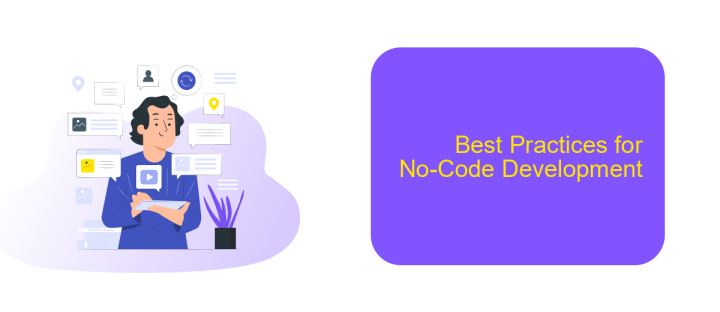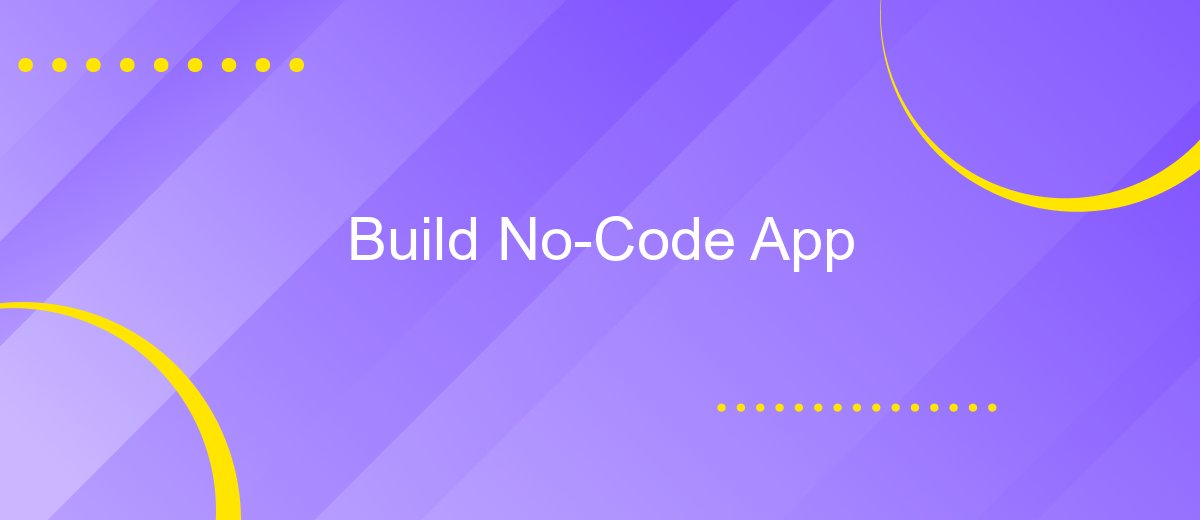Build No-Code App
Building a no-code app has never been easier, thanks to the rise of intuitive platforms that empower anyone to create functional applications without writing a single line of code. Whether you're an entrepreneur, a small business owner, or just someone with a great idea, no-code tools provide the flexibility and accessibility to bring your vision to life quickly and efficiently.
Introduction: Defining No-Code and Its Applications
No-code platforms have revolutionized the way we approach app development by allowing users to create applications without writing a single line of code. These platforms utilize visual interfaces and drag-and-drop tools, making app development accessible to a broader audience, including those without technical backgrounds.
- Rapid Prototyping: Quickly create and test app ideas.
- Cost Efficiency: Reduce development costs by eliminating the need for specialized developers.
- Ease of Use: Intuitive interfaces make it easy for anyone to build an app.
- Integration Capabilities: Seamlessly connect with other services and APIs, such as ApiX-Drive, to enhance app functionality.
No-code platforms are versatile and can be used for a variety of applications, from simple personal projects to complex business solutions. By leveraging tools like ApiX-Drive, users can easily set up integrations, automating workflows and connecting their apps to a multitude of other services. This democratization of app development empowers individuals and businesses to innovate and streamline their operations efficiently.
Benefits of Building No-Code Apps

Building no-code apps offers significant advantages, making it accessible for individuals without technical expertise to create fully functional applications. One of the primary benefits is the reduction in development time and cost. Traditional app development requires extensive coding knowledge and often involves a team of developers, which can be both time-consuming and expensive. In contrast, no-code platforms provide intuitive drag-and-drop interfaces, allowing users to quickly assemble their apps without writing a single line of code.
Another key benefit is the ease of integration with other services and tools. For example, platforms like ApiX-Drive enable seamless integration of various APIs, allowing apps to communicate and share data effortlessly. This means that even complex workflows can be automated and managed efficiently without deep technical know-how. Additionally, no-code solutions often come with built-in templates and pre-configured modules, further simplifying the development process and enabling rapid prototyping and deployment.
Steps to Build a No-Code App

Building a no-code app can be a straightforward and efficient process, allowing anyone to create functional applications without extensive programming knowledge. Here are the essential steps to get started:
- Define Your App's Purpose: Clearly outline the problem your app will solve and the features it will include.
- Choose a No-Code Platform: Select a no-code development platform such as Bubble, Adalo, or Glide that fits your app's requirements.
- Design the User Interface: Use the platform's drag-and-drop interface to design your app's layout and user experience.
- Set Up Workflows: Create the logic that will drive your app's functionality, such as user interactions and data processing.
- Integrate External Services: Use tools like ApiX-Drive to connect your app with external services and automate workflows, enhancing your app's capabilities.
- Test Your App: Thoroughly test your app to ensure it functions as expected and provides a seamless user experience.
- Launch and Iterate: Deploy your app to users, gather feedback, and make necessary improvements.
Following these steps will help you efficiently build a no-code app that meets your needs. By leveraging platforms and integration tools, you can focus on creativity and functionality without getting bogged down by complex coding tasks.
Best Practices for No-Code Development

No-code development is revolutionizing the way we build applications, but to maximize its potential, it's essential to follow best practices. Start by clearly defining your project goals and requirements. This will help you choose the right no-code platform and tools that align with your objectives.
Next, focus on user experience and design. Even though no-code platforms simplify the development process, it’s still crucial to create intuitive and user-friendly interfaces. Make sure to test your app thoroughly to identify and resolve any usability issues.
- Define clear project goals and requirements
- Choose the right no-code platform
- Prioritize user experience and design
- Test your app thoroughly
- Utilize integration tools like ApiX-Drive
Finally, leverage integration tools such as ApiX-Drive to connect your no-code app with other services and automate workflows. This will enhance the functionality of your application and save time on manual tasks. By following these best practices, you can create robust and efficient no-code applications.


Conclusion: Embracing the Power of No-Code
In conclusion, the no-code movement is revolutionizing the way we approach app development. By lowering the barriers to entry, it empowers individuals and businesses to bring their ideas to life without the need for extensive programming knowledge. This democratization of technology fosters innovation, enabling anyone with a vision to create functional and impactful applications. The future of app development is undoubtedly leaning towards more accessible and user-friendly platforms, making it an exciting time to explore the possibilities of no-code solutions.
Moreover, the integration of services like ApiX-Drive further enhances the capabilities of no-code platforms. By simplifying the process of connecting various applications and automating workflows, ApiX-Drive allows users to focus on what truly matters – building and refining their product. Embracing no-code tools and integrations not only accelerates development timelines but also ensures that even the most complex functionalities are within reach. As we continue to embrace the power of no-code, the potential for innovative and efficient solutions is limitless.
FAQ
What is a no-code app?
How do I get started with building a no-code app?
Can I integrate third-party services into my no-code app?
Is it possible to scale a no-code app?
What are the limitations of no-code apps?
Apix-Drive will help optimize business processes, save you from a lot of routine tasks and unnecessary costs for automation, attracting additional specialists. Try setting up a free test connection with ApiX-Drive and see for yourself. Now you have to think about where to invest the freed time and money!

